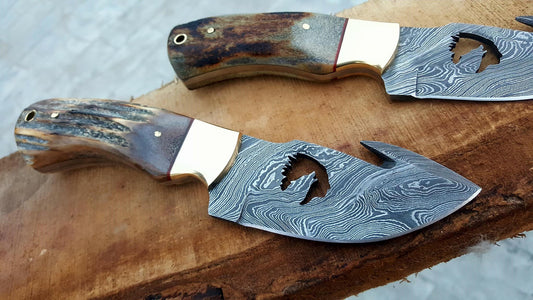Are you ready to take your deer hunting game to the next level? The experience of tracking and harvesting game can be exhilarating, but the real challenge often lies in the field dressing process. Enter the gut hook knife—an essential tool that can make all the difference when it comes to efficiency and precision. With its specialized design, a gut hook knife allows hunters to effortlessly open the abdomen of a deer, minimizing the risk of damaging internal organs and maximizing the quality of your harvest. In this ultimate guide, we’ll delve into the features, benefits, and top picks for gut hook knives that every serious hunter should consider. Whether you're a seasoned pro or a novice stepping into the wild, mastering the art of using a gut hook knife will elevate your skills, ensuring that you make the most of every hunting season. Get ready to transform your approach and reap the rewards with every successful hunt!
The Anatomy of a Gut Hook Knife
A gut hook knife is distinctively designed to cater to specific needs during the field dressing process of hunting. The most noticeable feature that sets it apart from other knives is the hook-shaped notch on the spine of the blade. This hook serves the primary purpose of making clean, precise cuts along the abdomen of a deer without puncturing the internal organs. The blade itself is typically robust, sharp, and curved to facilitate efficient slicing through skin and tissue. The handle is ergonomically designed to provide a secure grip, even when wet or bloody, ensuring that the hunter maintains control during the delicate task of gutting.
The materials used in crafting a gut hook knife are crucial to its performance and durability. High-carbon stainless steel is a popular choice for the blade, offering a perfect balance between sharpness, strength, and resistance to corrosion. The handle materials can vary widely, from traditional wood to synthetic composites like G10 or Micarta, each providing different levels of comfort, grip, and aesthetics. Some gut hook knives also feature finger guards or textured grips to enhance safety and precision during use.
Another critical aspect of a gut hook knife is its portability and ease of access. Many models come with protective sheaths made from leather, nylon, or kydex, which can be attached to a belt or hunting pack. This ensures that the knife is always within reach when needed. The overall design and construction of a gut hook knife reflect its specialized purpose, combining functionality, safety, and durability to assist hunters in efficiently field dressing their game.
Benefits of Using a Gut Hook Knife for Deer Hunting
Using a gut hook knife during deer hunting offers several significant advantages that can enhance the overall hunting experience. One of the primary benefits is the precision it provides. The unique hook design allows hunters to make clean, controlled incisions along the deer's abdomen without risking damage to the internal organs. This minimizes the chances of contaminating the meat with stomach contents or bile, ensuring a higher quality harvest. The precision and control afforded by a gut hook knife can be especially beneficial for novice hunters who may not yet have the experience to make such cuts with a traditional blade.
Efficiency is another key benefit of using a gut hook knife. Field dressing a deer can be a time-consuming and labor-intensive process. However, the specialized design of a gut hook knife streamlines this task, allowing hunters to open the deer's abdominal cavity quickly and with minimal effort. This efficiency is particularly important in the field, where time is often of the essence, and conditions can be less than ideal. A gut hook knife reduces the physical strain on the hunter, making the process faster and less tiring.
Finally, safety is a crucial advantage of using a gut hook knife. The ergonomic handle and the controlled cutting motion reduce the risk of accidental slips and cuts, protecting the hunter from potential injuries. Additionally, the hook design minimizes the need for excessive force, further decreasing the likelihood of accidents. By providing a safer, more efficient, and precise tool for field dressing, a gut hook knife enhances the overall hunting experience, allowing hunters to focus more on the hunt and less on the post-harvest process.
How to Choose the Right Gut Hook Knife
Selecting the right gut hook knife involves considering several factors to ensure that it meets your specific needs and preferences. One of the first aspects to consider is the blade material. High-carbon stainless steel is a popular choice due to its combination of sharpness, durability, and resistance to rust and corrosion. However, some hunters may prefer other materials, such as Damascus steel, which offers unique patterns and strength characteristics. The blade's length and thickness should also be taken into account, as these factors can affect the knife's overall performance and ease of use.
The handle design is another crucial consideration when choosing a gut hook knife. Look for a handle that provides a comfortable, secure grip, even in wet or bloody conditions. Materials such as rubber, G10, and Micarta are known for their excellent grip and durability. Ergonomic designs with finger grooves or textured surfaces can further enhance control and reduce hand fatigue during use. It's also important to consider the knife's overall weight and balance, as a well-balanced knife can be easier to maneuver and control.
Additional features, such as the presence of a finger guard or a built-in sharpener, can add to the knife's functionality and convenience. Some gut hook knives come with a protective sheath for safe storage and easy access. When evaluating different models, it's helpful to read reviews and seek recommendations from other hunters to get a sense of the knife's performance in real-world conditions. Ultimately, the right gut hook knife should feel comfortable in your hand, meet your specific needs, and be made from high-quality materials that ensure long-lasting performance.
Top Gut Hook Knives on the Market
When it comes to top gut hook knives on the market, several models stand out due to their exceptional design, materials, and performance. One highly recommended option is the Buck Knives 393 Omni Hunter. Known for its robust construction and sharp blade, the 393 Omni Hunter features a high-carbon stainless steel blade with a reliable gut hook. The ergonomic handle, made from a combination of rubber and thermoplastic, provides a secure grip, making it a favorite among hunters for its comfort and durability.
Another top contender is the Havalon Piranta-Edge, which is renowned for its replaceable blade system. This feature ensures that the knife is always razor-sharp without the need for sharpening. The gut hook blades are easy to replace, making it a convenient option for hunters who prefer minimal maintenance. The handle is designed for comfort and control, with a textured grip that ensures a secure hold even in challenging conditions. The Havalon Piranta-Edge is lightweight and portable, making it an excellent choice for hunters who prioritize ease of use and efficiency.
The Gerber Vital Pocket Folder is also a popular choice among hunters. This compact and lightweight knife features a high-quality stainless steel blade with a gut hook, designed for precision and ease of use. The bright orange handle is highly visible, reducing the risk of losing the knife in the field. The handle's rubber overmold provides a comfortable and secure grip, even in wet conditions. The Gerber Vital Pocket Folder is praised for its portability, sharpness, and user-friendly design, making it a reliable tool for any hunting trip.
Maintenance and Care for Your Gut Hook Knife
Proper maintenance and care are essential to ensure the longevity and performance of your gut hook knife. One of the most important aspects of maintenance is keeping the blade sharp. A dull blade can make field dressing more difficult and increase the risk of accidents. Regularly sharpen your gut hook knife using a sharpening stone or a specialized knife sharpener. Pay particular attention to the hook portion, as it can be challenging to sharpen without the right tools. Maintaining a sharp edge will ensure that your knife performs efficiently during each use.
Cleaning your gut hook knife after each use is crucial to prevent rust, corrosion, and the buildup of residue. Use warm water and mild soap to clean the blade and handle, taking care to remove any blood, tissue, or dirt. Avoid soaking the knife for extended periods, as this can damage the materials. After cleaning, thoroughly dry the knife with a soft cloth to prevent moisture from causing rust. For added protection, apply a thin layer of oil to the blade before storing it, especially if you won't be using the knife for an extended period.
Storing your gut hook knife properly is another key aspect of maintenance. Always use the protective sheath that comes with the knife to prevent accidental cuts and to protect the blade from damage. Store the knife in a dry, cool place away from direct sunlight and extreme temperatures. If your knife has a wooden handle, consider applying a wood conditioner periodically to keep it from drying out and cracking. By following these maintenance and care tips, you can ensure that your gut hook knife remains in excellent condition, ready for use whenever you need it.
Techniques for Using a Gut Hook Knife Effectively
Using a gut hook knife effectively requires a combination of proper technique, precision, and care. Begin by positioning the deer on its back with the legs spread apart to expose the abdomen. Make an initial incision near the pelvis, just enough to insert the gut hook. Take care not to puncture the internal organs. Insert the gut hook into the incision and gently pull the knife upwards along the midline of the abdomen. The hook should effortlessly slice through the skin and tissue, creating a clean opening for further processing.
When using the gut hook, it's important to maintain a controlled and steady motion. Avoid applying excessive force, as this can lead to uneven cuts or accidental punctures of the internal organs. Keep the blade at a consistent angle to ensure a smooth and precise cut. If you encounter resistance, gently wiggle the knife to maneuver through tougher tissues. The key is to let the sharpness of the blade and the design of the hook do the work, rather than relying on brute strength.
After opening the abdomen, carefully use the main blade to continue the field dressing process. This includes removing the internal organs and preparing the carcass for transport. Throughout the process, frequently check the blade for any buildup of tissue or debris, and clean it as needed to maintain optimal performance. By mastering these techniques, you can efficiently and effectively use a gut hook knife to field dress a deer, ensuring a high-quality harvest and a more enjoyable hunting experience.
Common Mistakes to Avoid When Using a Gut Hook Knife
Even experienced hunters can make mistakes when using a gut hook knife. One common mistake is applying too much pressure when using the gut hook. This can lead to puncturing the internal organs, which can contaminate the meat and make the field dressing process more challenging. To avoid this, use a light, controlled motion, allowing the sharpness of the blade to do the work. Practice makes perfect, so take the time to become familiar with the knife and develop a steady hand.
Another mistake is neglecting to maintain the knife properly. A dull or dirty blade can be dangerous and ineffective. Regularly sharpening and cleaning your gut hook knife is essential to ensure it performs well in the field. Failing to do so can result in uneven cuts, increased effort, and a higher risk of accidents. Always check the condition of your knife before heading out on a hunting trip and carry a portable sharpener with you for touch-ups as needed.
Improper handling and storage of the gut hook knife can also lead to problems. Always use the protective sheath to store the knife and keep it in a safe, dry place. Avoid carrying the knife loosely in your hunting pack, as this can cause damage to the blade and increase the risk of accidental cuts. When using the knife, maintain a secure grip and be mindful of your hand placement to prevent slips. By avoiding these common mistakes, you can ensure that your gut hook knife remains a reliable and effective tool for your hunting adventures.
Safety Tips for Handling Gut Hook Knives
Safety should always be a top priority when handling gut hook knives. One of the most important safety tips is to maintain a secure grip on the knife at all times. The handle should be designed to provide a comfortable and non-slip grip, even in wet or bloody conditions. If you feel that your grip is compromised, stop and adjust your hold before continuing. Wearing protective gloves can also enhance your grip and provide an additional layer of safety.
Always be aware of your surroundings and the placement of your hands when using a gut hook knife. Keep your non-dominant hand clear of the cutting path to avoid accidental injuries. Use deliberate and controlled motions, avoiding any sudden or forceful movements that could lead to slips. If you need to reposition the deer or adjust your stance, do so carefully and ensure that the knife is securely sheathed or placed in a safe location before making any changes.
Proper storage and transportation of your gut hook knife are also critical for safety. Use the protective sheath to cover the blade when the knife is not in use, and store it in a designated compartment in your hunting pack. Never carry the knife loosely, as this can lead to accidental cuts or damage to the blade. When transporting the knife, ensure that it is securely fastened and out of reach of children or inexperienced individuals. By following these safety tips, you can handle your gut hook knife with confidence and reduce the risk of accidents in the field.
Conclusion: Elevate Your Hunting Experience with the Right Tools
In conclusion, a gut hook knife is an indispensable tool for deer hunters, offering precision, efficiency, and safety during the field dressing process. By understanding the anatomy of a gut hook knife, selecting the right model, and mastering the techniques for its use, you can significantly enhance your hunting experience. Proper maintenance and care will ensure that your knife remains in top condition, ready for use whenever you need it. Additionally, being aware of common mistakes and following safety tips will help you handle the knife with confidence and reduce the risk of accidents.
Whether you are a seasoned hunter or a novice, investing in a high-quality gut hook knife can make a world of difference in your hunting success. The ability to field dress a deer quickly and cleanly not only preserves the quality of the meat but also allows you to focus on the thrill of the hunt. By elevating your skills with the right tools, you can make the most of every hunting season and enjoy a more rewarding and satisfying experience. So gear up, head into the wild, and take your deer hunting game to the next level with the ultimate guide to gut hook knives.
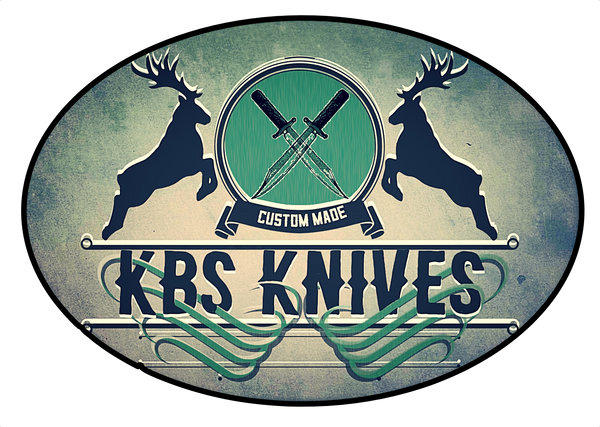













![[DAMASCUS_KNIVES], [HUNTING_KNIVES], [KNIFE], [HANDMADE_KNIVES], [SKINNING_KNIVES], [DAGGER_KNIVES], [TRACKER_KNIVES], [KITCHEN_KNIVES], [FOLDING_KNIVES] - KBS Knives Store](http://www.kbsknivesstore.com/cdn/shop/products/65618989_2596385283726491_766316328469397504_n.jpg?v=1569359969&width=533)
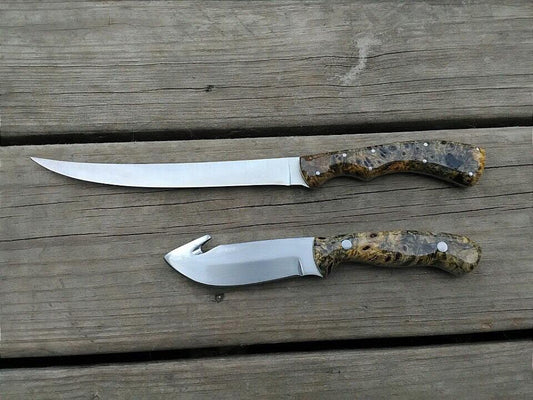


![[DAMASCUS_KNIVES], [HUNTING_KNIVES], [KNIFE], [HANDMADE_KNIVES], [SKINNING_KNIVES], [DAGGER_KNIVES], [TRACKER_KNIVES], [KITCHEN_KNIVES], [FOLDING_KNIVES] - KBS Knives Store](http://www.kbsknivesstore.com/cdn/shop/products/51360390_418772198692803_5962353175087024736_n.jpg?v=1569358954&width=533)
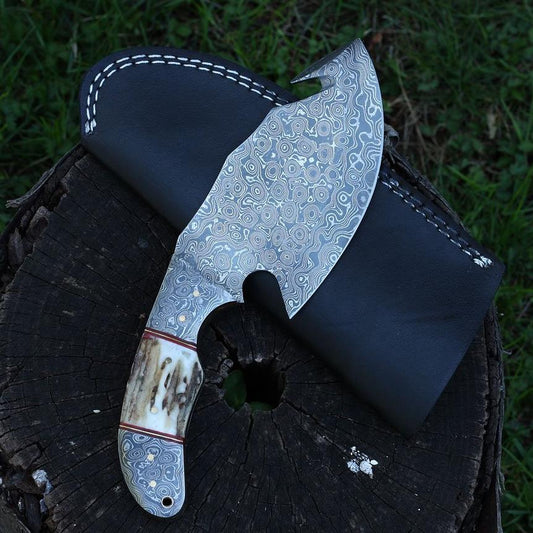
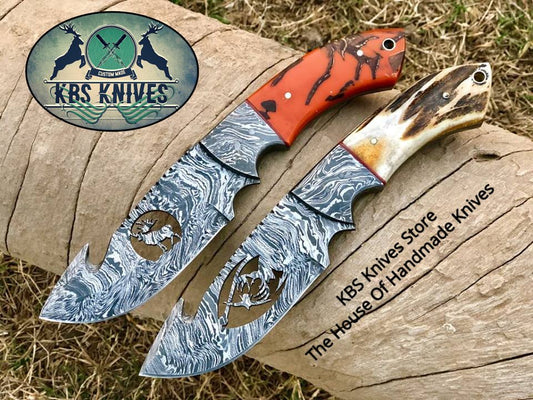




![[DAMASCUS_KNIVES], [HUNTING_KNIVES], [KNIFE], [HANDMADE_KNIVES], [SKINNING_KNIVES], [DAGGER_KNIVES], [TRACKER_KNIVES], [KITCHEN_KNIVES], [FOLDING_KNIVES] - KBS Knives Store](http://www.kbsknivesstore.com/cdn/shop/products/243404-129ec78fc0c448ccb2c13b0e382359d9.jpg?v=1569359075&width=533)

